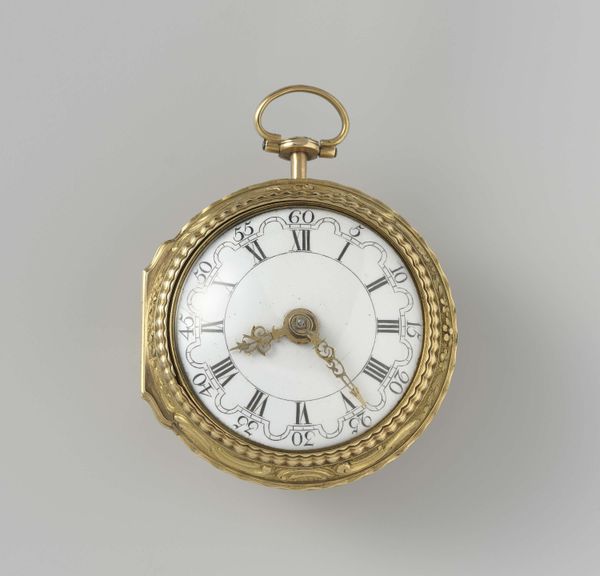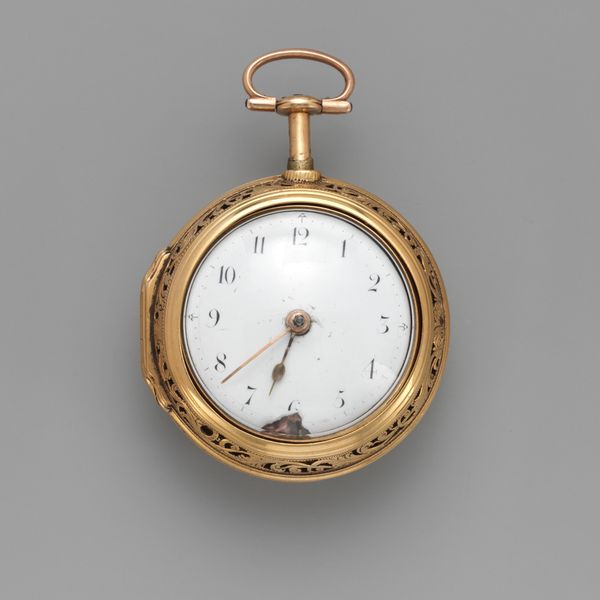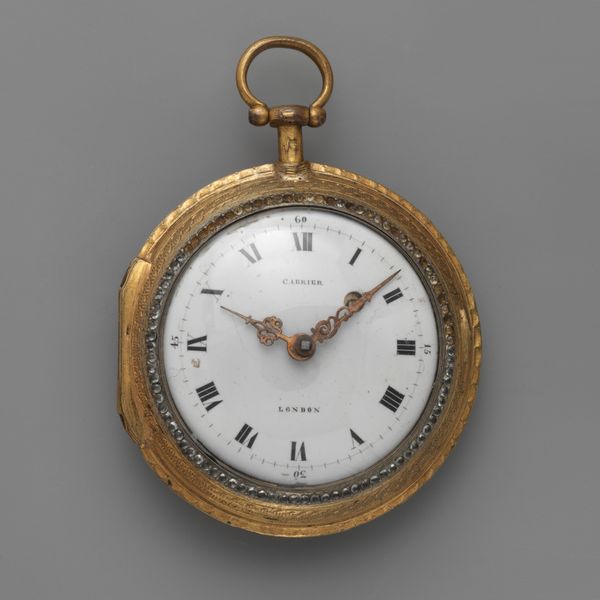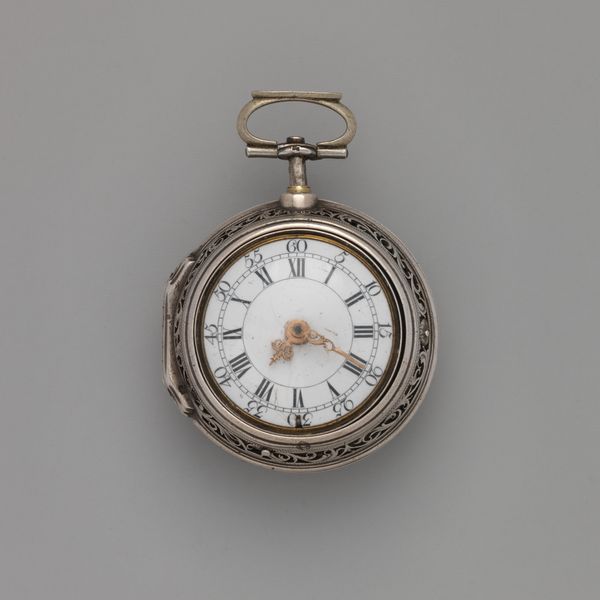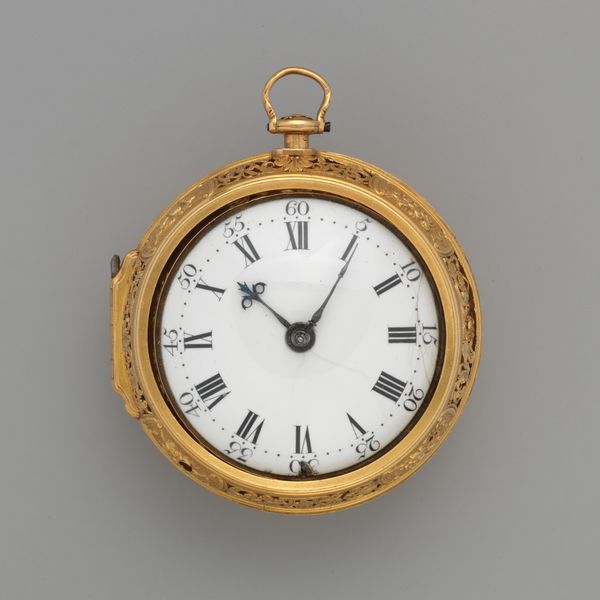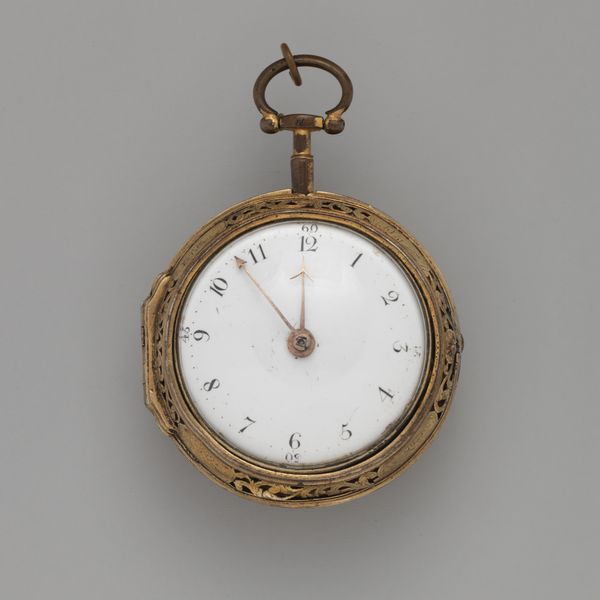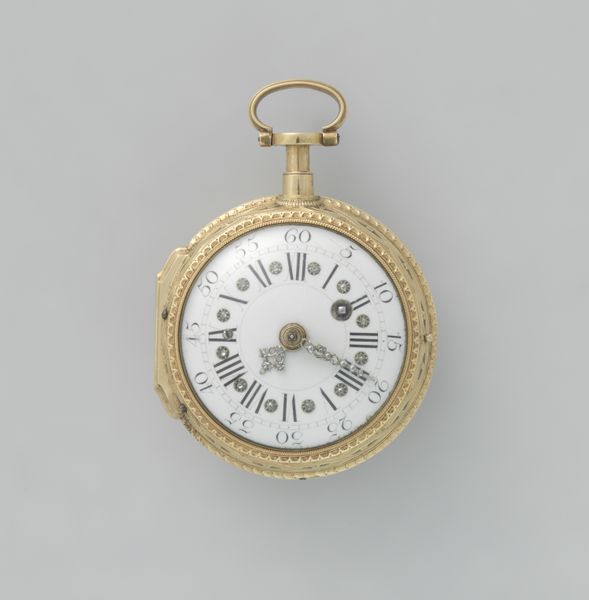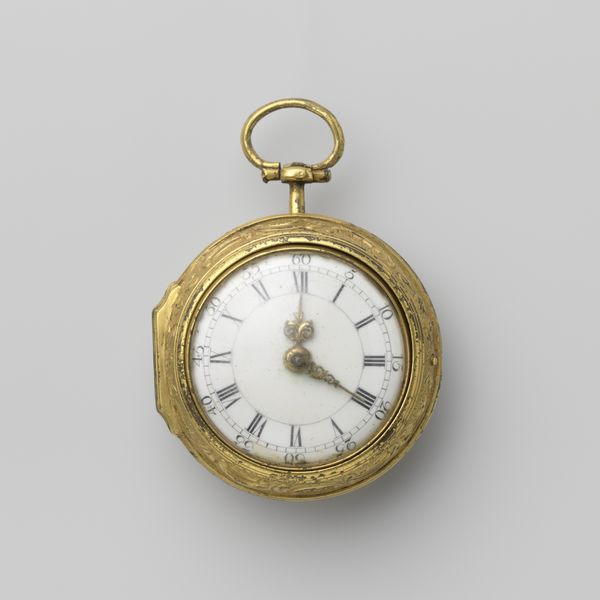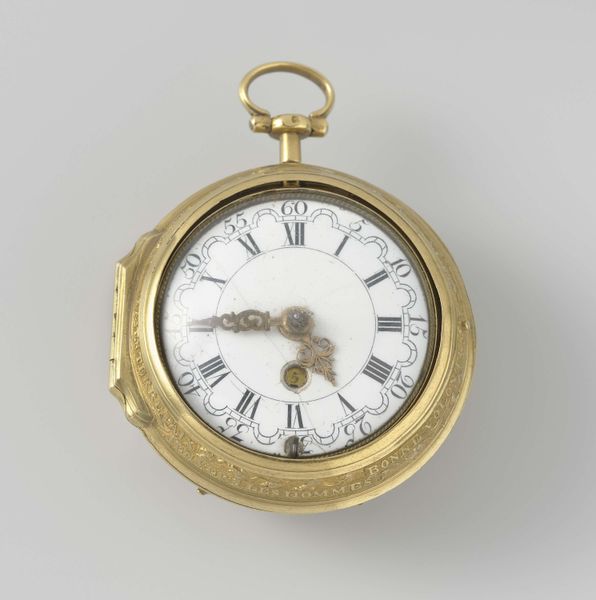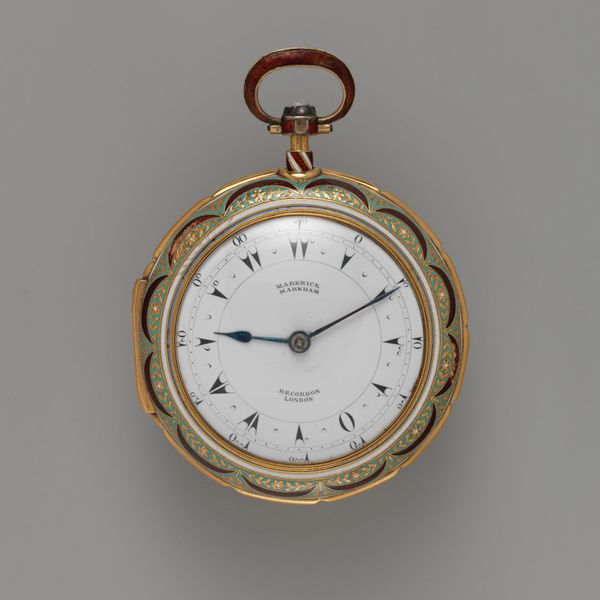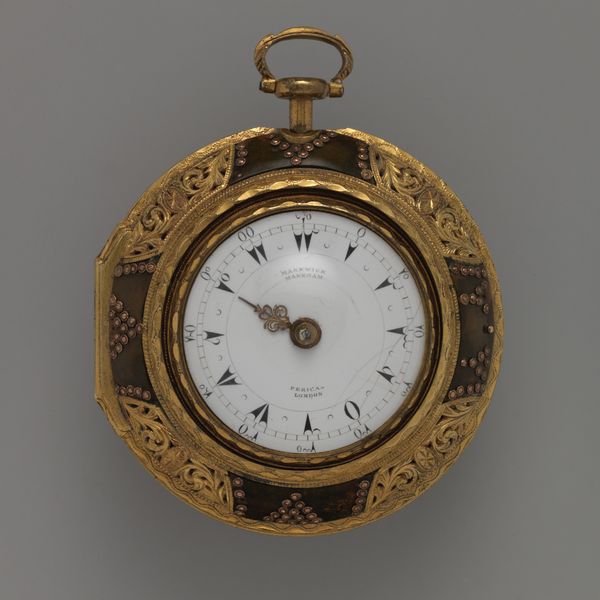
metal, sculpture
#
portrait
#
metal
#
11_renaissance
#
sculpture
#
decorative-art
Dimensions: Overall: 1 3/4 × 1 1/2 in. (4.4 × 3.8 cm)
Copyright: Public Domain
Curator: Take a moment to examine this oval silver watch, created by Edward East between 1635 and 1645. It’s part of the Metropolitan Museum of Art’s collection. Editor: It strikes me immediately as something intensely personal. The small scale and slightly worn surface gives it a really intimate feel. Curator: Yes, and beyond its function, the watch is imbued with significant symbolic meaning. Clocks and timepieces, particularly during the Renaissance, were often viewed as memento mori, reminders of mortality. Time, inexorably marching on, symbolized the transient nature of life. Editor: And look closely at the materials, though! It’s not just about marking time but displaying status. The silver case suggests considerable wealth and perhaps even hints at the owner's participation in larger economic systems related to silver mining and trade. This tiny object, made by the very specific labor of clockmakers. Curator: The use of Roman numerals harkens back to antiquity, aligning the owner with the legacy and authority of the Roman Empire. A cultural connection, perhaps attempting to legitimize the rising social class of the period. Editor: Absolutely, while that ornate casing reflects a real craftspersonship! It wasn't only about showing off raw material value, but it demonstrated expertise and skill, adding to the overall cultural value placed on luxury and leisure during that period. Can you imagine the conditions for those laborers crafting these tiny moving components with rudimentary tools? Curator: Indeed. But don’t lose sight of the philosophical weight that time carried. Consider it further, too; owning such a delicate object meant that time, abstract and intangible, was now within the individual’s control or at least perception. It offered a psychological benefit. Editor: The very concept of portable time feels radical when viewed in this context. Before the industrial production of watches, its making required skilled specialists using refined and scarce materials. It is no simple ornament. Curator: Looking at this intricate timekeeper encourages a sense of perspective, doesn't it? Editor: It really does, it grounds those big ideas, about both time and empires in a single human-scale object.
Comments
No comments
Be the first to comment and join the conversation on the ultimate creative platform.
